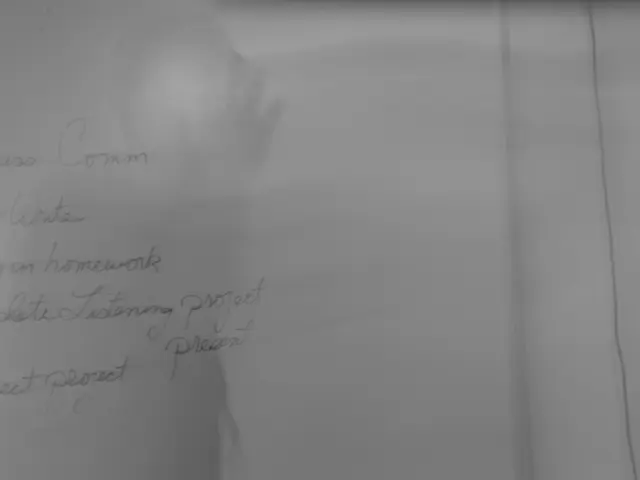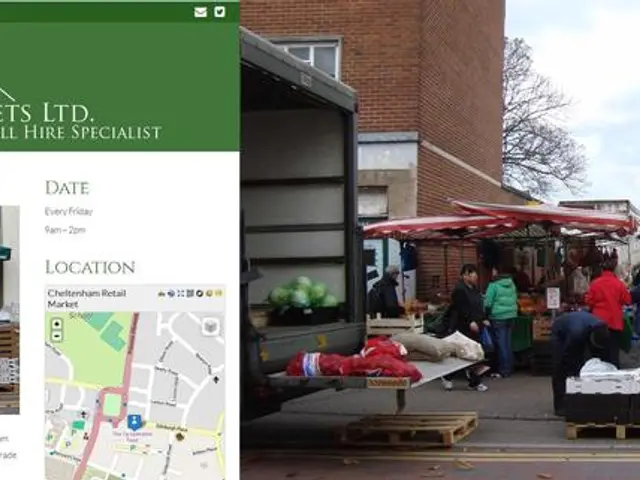SpaceX's Plan for the Demolition of the International Space Station
The International Space Station (ISS) is set to conclude its operational life with the assistance of a SpaceX-developed deorbiting vehicle, known as the US Deorbit Vehicle (USDV). The project, valued at $843 million, is a crucial step for NASA as it prepares for the transition to commercial space stations.
The USDV, a Cargo Dragon variant, will be launched by Falcon 9 and dock with the ISS using a standard Cargo Dragon docking port. Once attached, the deorbit vehicle will remain inactive for about a year while the ISS's orbit naturally decays. After this period, the USDV will perform controlled orientation burns to lower the station's perigee, followed by final deorbit maneuvers that will guide the ISS safely into the South Pacific Ocean.
The Russian segment of the ISS will play a vital role in this process, using its engines for attitude control to assist the USDV during thrust operations. Starting in late 2025, SpaceX's Cargo Dragon spacecraft has been performing periodic orbit-raising burns to maintain the ISS's altitude, reducing reliance on Russian Progress vehicles and station thrusters.
The deorbiting vehicle is likely to be equipped with advanced propulsion systems using liquid propellant engines. It will release itself with extreme precision to avoid any damage to the remaining structures. Advanced control systems, including autonomous navigation systems and sensors, will be integrated into the deorbiting vehicle.
After the deorbit, SpaceX and NASA will conduct a thorough assessment to verify the successful deorbit and safe removal of debris. The vehicle will be equipped with robust security systems to prevent collisions and minimize potential space debris.
The decision to entrust SpaceX with this task reflects NASA's trust in the company's expertise in space transportation and complex orbital maneuvers. It also marks the end of an era of international cooperation in space exploration with the ISS.
Several other companies, including Axiom Space, Blue Origin, Sierra Space, Boeing, Amazon's Blue Origin, Voyager Space, Lockheed Martin, and Northrop Grumman, are also involved in projects to develop private space stations. Close coordination with ISS partners, including Roscosmos and other international partners, will be essential for a safe and coordinated deorbit.
The goal is to ensure a controlled deorbit of the structure after 2030. Sensors on board the deorbit vehicle will monitor the trajectory and temperature in real time during reentry. The final orbit for the ISS will be determined, usually over the Pacific Ocean to minimize risks.
[1] SpaceX's Cargo Dragon spacecraft starts performing orbit-raising burns for ISS. (2022, August 11). SpaceNews. https://spacenews.com/spacexs-cargo-dragon-spacecraft-starts-performing-orbit-raising-burns-for-iss/
[2] SpaceX's Dragon spacecraft to deorbit International Space Station. (2021, August 25). Space.com. https://www.space.com/spacex-dragon-spacecraft-deorbit-international-space-station.html
[3] SpaceX's Dragon spacecraft to boost ISS altitude in September. (2022, September 2). SpaceNews. https://spacenews.com/spacexs-dragon-spacecraft-to-boost-iss-altitude-in-september/
[4] SpaceX's Dragon spacecraft to deorbit International Space Station. (2021, August 25). Space.com. https://www.space.com/spacex-dragon-spacecraft-deorbit-international-space-station.html
[5] SpaceX's Dragon spacecraft to boost ISS altitude in September. (2022, September 2). SpaceNews. https://spacenews.com/spacexs-dragon-spacecraft-to-boost-iss-altitude-in-september/
- The SpaceX-developed deorbiting vehicle, the US Deorbit Vehicle (USDV), is being utilized to conclude the operational life of the International Space Station (ISS), underlining NASA's trust in SpaceX's expertise in space transportation and complex orbital maneuvers.
- The USDV, equipped with advanced propulsion systems and robust security systems, will perform controlled deorbit maneuvers that will guide the ISS safely into the South Pacific Ocean, following a year of inactivity while the ISS's orbit naturally decays.
- Besides SpaceX, companies like Axiom Space, Blue Origin, Sierra Space, Boeing, Amazon's Blue Origin, Voyager Space, Lockheed Martin, and Northrop Grumman are also involved in projects to develop private space stations, necessitating close coordination for a safe and coordinated deorbit of the ISS.






